|
If I got a dollar every time someone told me they've "always been fascinated by belly dance," but it took them years or even decades to set foot in a class because they were too busy, or too intimidated, or thought they were too old or too fat or too [insert a quality deemed to be negative here] to give it a try, I might have a few thousand dollars to spare by now.
I hear this all too often and it makes me sad to think of how many women are missing out on this joyful practice and its countless benefits every year due to societally-imposed insecurities and societally-imposed prioritization of everything and everyone else before themselves, as well as assumptions about what a belly dancer "should look like." For many women, walking into a belly dance class means breaking through a lot of societal conditioning that says they are somehow not "good enough" to take part in this activity. Over my 12+ years of teaching this dance, the most common feeling I notice in my newer students is a sense of shame: Shame for not being "able to dance" Shame for "having no rhythm" Shame for being "too stiff" Shame for not doing a movement "right" Shame for not being the "right" age Shame for not being the "right" body type Shame for not being "fit enough" Shame for having physical limitations And so much more Part of it is that I attract these types of clients, because this is exactly how I also felt the first time I set foot in a belly dance class, as a sedentary adult with zero dance training and body image issues inherited from generations of oppressive beliefs imposed on & about women. Practicing this dance has helped me, and continues to help me break through all of that, and this is why I am passionate about my work as a dance and movement teacher, and why I am so intentional in fostering spaces where women can learn this rich and complex art form while freeing themselves from harsh, unhelpful, and unfair judgments of themselves. The other part of it is that these self-criticisms are almost ubiquitous among women. So let's shed some truth on these sticky lies: Belly dance is for every BODY. If you have a body, you can learn belly dance. It doesn't matter how thin or fat you are, how fit or out of shape (and thinness/fatness are not measures of health), you can learn belly dance. The practice can accommodated to fit any fitness level or physical limitation. You can start at any age, and still learn belly dance. I have taught children and I have taught 90+ year-olds, and every age in between. It doesn't matter if you don't have natural rhythm, or if at first every single move feels impossible. You Can Learn This Dance! All it takes is good and supportive guidance and showing up consistently to a class and/or personal practice. Belly dance isn't easy, and it takes time to learn, but so do most worthwhile things in life. It's worth it for the beautiful ways we get to move our bodies, for the wonderful new ways we learn to see ourselves, and for the holistic benefits to our health--including mind, body and soul. Belly dance can be an outlet for artistic expression, musical appreciation, and connection and community with other women and like-minded people. There are few things that bring me more joy than witnessing these benefits materializing in the lives of my students along their belly dance journey. I am writing this post as my wish for the New Year, a timeless wish for every year: That every woman who has "always been fascinated by belly dance" but been too afraid, ashamed, insecure, or prioritizing-of-everyone-before-themselves to try it will finally break through all of the baggage that has been keeping them from finally getting started, and receiving all the blessings that this practice can bring. If you'd like to receive my guidance on your journey, you can view all my available belly dance classes (online on Zoom or in person in New Jersey) here. I'm wishing you a New Year filled with love, joy, and all the beautiful experiences and growth you seek!
2 Comments
On slowing down and embracing a new pace this winter As winter approaches here in the north, I am allowing myself to sit with and embody the themes of the colder seasons. In a culture that glorifies "the hustle," the daily grind, and maximum productivity all the time, it feels almost revolutionary to be giving myself the space to slow down, to carve out more time to rest, to spend more time in quiet reflection.
Yet this is all very necessary. It is natural. It is the way it should be. Just look at nature. The sun rises and it sets, creating times of daylight and times of darkness. The seasons change, and with them so does the length of daylight and darkness each day. Our lives should shift and change along with the seasons. Each night we can gaze upon a different moon--it is never illuminated the same way two days in a row. All bodies of water shift from one moment to the next, depending on the dryness and the rain. Many trees shed their leaves, providing nourishment for their own soil while deepening their roots. Plants have their own seasons for being planted, for growing, for blooming, for being harvested and for dying. All of nature works in cycles, yet we are taught to think we should be "blooming" all the time. We live as if we were separate from nature. In reality, we are a part of nature. We are nature. We can try as much as we can to separate ourselves from nature and her cycles, but they are integral parts of us. Nature doesn't worry about productivity. Neither should we. But we can look at how fruitful she is, and recognize that we cannot be fruitful without honoring the natural cycles within us and outside of us. As a dancer and artist, I've noticed how my best ideas never came to me in the moments that I was overwhelmed, overbooked, and rushing from one commitment to the next. The best ideas come when I've created the space for them to come, and when I'm open enough to receive them. I've also noticed how trying to work through a problem doesn't usually get me very far, but solutions to my problems arrive on their own when I am calm and not hyperfused on them. Things tend to fall into place very naturally when I'm not actively trying to force a solution. I recently had the chance to spend a few days at a Buddhist monastery, where I took part in many of their practices. Their sitting meditations, walking meditations, and mindful eating practices are very simple and yet so powerful and transformative. I noticed how much of my life I've spent rushing. Rushing from one thing to the next. Multi-tasking all the time. Quickly scarfing down my meals while responding to messages. Rushing to finish my work quickly. Getting frustrated at slow drivers in front of me. Feeling anxious about the future. Never enjoying the present moment. What is the big rush? So many of us live our lives in a big rush. Where are we rushing to? The present moment is all we have. If we can't enjoy the present moment, then what are we living for? Always striving for something in the future, always striving for something out of reach. We work hard to reach a goal, and when we reach it we still aren't satisfied, already moving on to the next. If we can't slow down to appreciate the now, then all we are doing is living our lives rushing to our graves. I've been thinking of the ways that our cultural obsession with rushing and our desire for quick achievement gets reflected in our mindset towards dance. We rush through our movements, diminishing the power of the practice. Instead we could slow down, really feel into what we are doing, and allow our bodies to integrate new movements and patterns at their own pace, really internalizing each lesson. We attach ourselves to end goals like getting a movement "right" and become disappointed when it doesn't happen right away after just a few tries. Instead we could appreciate everything we can already do, enjoy the way the movement and music make us feel, and find joy in the process of learning more. Dance is not a race... life is not a race! We can take our time to slowly build a solid foundation. We can do it mindfully, and enjoy each step of the way. May you have a calm, slow and restful season, sowing the seeds for a fruitful practice and life. Often times it's in those moments that we feel the least like dancing, that we most need the medicine it can bring.
We are going through a time of so much collective trauma, pain and grief. And on top of that collective pain, so many are going through personal trials and tribulations too. In times like these, we often can't bring ourselves to do the things that bring us joy--like dancing. It's easy to stop taking care of ourselves and our needs, and to spiral down into hopelessness and despair. Yet these are the times when we need dance the most. These are the times when its benefits can be the most powerful. I have personally experienced this countless times. This dance has been there for me through every hardship I've faced in my adult life. Abuse, financial struggles, deaths of loved ones, accidents, injuries, difficult endings and life changes, and of course a global pandemic... through it all, the last thing I wanted to do was dance, but I was "forced" to dance anyway--as a dance teacher, I kept dancing and I kept showing up for my students no matter what. And each time I did, I always felt a little bit better. Dance didn't solve all my personal problems, and it certainly can't solve all the problems that plague our world, but it does give us the strength to keep going. I'm writing this with no agenda, other than to share with you the tool that most helped me through all of my own suffering. You don't have to take my classes, or any class at all, to benefit from the healing power of moving to music. But if you do come to my classes, know that I am holding space for the full spectrum of your human experience. Not just your joy, but your pain and grief too. And if you are suffering right now, I am sending you so, so much love. After more than a decade of teaching this dance, here's what I wish all my new belly dance students would know It's crazy how many people step into my beginner belly dance classes feeling apprehensive and even ashamed for not having any dance background or feeling like they are not naturally skilled at dance.
If we all came out of the womb as perfect dancers, what would be the point of taking a class? One of the first things I tell my clients is that I too, only started dancing as an adult. I never had any lessons or training as a child. Growing up I had orthopedic issues, and was very sedentary. And I still don't pick up new physical disciplines and movement patterns with a whole lot of ease. I just don't let that stop me, and these days I see it as a blessing. It's because I am the way I am that I really take my time to understand movement techniques and to break them down into manageable chunks. And because I am the way I am I can really relate to everyone who steps into my classes feeling apprehensive. And in fact, I personally really enjoy teaching students who are struggling. I love breaking movements down into really simple forms and the opportunity to analyze and shift the way that I am teaching to fit each person's needs in that moment. Plus, over the many years that I've been teaching, it has been so rewarding to watch hundreds of people go from feeling like they have "two left feet" to blossoming into skilled and graceful dancers. If you've been intimidated about taking up this art form and you need the support from a teacher who has been in your shoes, or if you already have belly dance experience but are looking for a supportive and empowering community to join to take your dancing to the next level, consider joining one of our classes here at SharqiDance! We offer highly interactive live classes both online (Zoom) and in person (Long Branch, NJ). All our classes are offered as closed-container, two month courses with a start date and an end date, and a limited amount of time to register. This way we can keep our classes consistent, small and individualized. We build on skills learned week after week until the end of the course, with class recap email notes and videos to help you practice between classes. But whether or not you decide to study with me here at SharqiDance, or with another teacher and school, if you are new to this dance, remember this: No one is born a skilled dancer. Belly dance is an art form that anyone can learn. Yes, even those of us with two left feet. All it takes is a willingness to learn, a love of the dance, and consistent practice. And of course, it helps to have the guidance of a teacher who wants to see you succeed! So go forth and get started on your belly dance journey. You just might surprise yourself at what you will be able to do, a few months and years down the line. I'm here today with a stern reminder that slut-shaming has no place in belly dance. I've been seeing a lot of posts lately by some of my colleagues and predecessors, singling out dancers in Cairo for comment and judgment on their revealing choices of costuming. Here are a number of reasons why this is not okay: 1. The female body in movement always has been and always will be controversial under patriarchy. Particularly the types of movements we do. You might think you are setting yourself apart from dancers wearing more revealing costumes by wearing more conservative costumes, and certainly there will be some people who will be more accepting of your role as a dancer if you do so, but there will always be people who will consider you a sex worker and/or place you at the bottom rung of society simply for being a woman who chooses to belly dance in public, especially if you are getting paid to do so. This is a fact that needs to be understood, leading to point #2 2. Slut-shaming other women is NEVER going to elevate you, it is never going to help you succeed, it is never going to "elevate the art form" and it is never going to make you look good. All this does is drag all of us down, including yourself. It drags the art form and women as a whole down, much more than a revealing costume ever could. See point #1 as to why. For the simple fact that you choose to belly dance in public, you are automatically placed on the same side of the spectrum as the strippers and sex workers you vilify, by a good chunk of the general public, both here AND in the Middle East. You can't "elevate" yourself out of that, certainly not by publicly shaming someone else for wearing just a few inches less than you would. Leading to point #3 3. You shaming another dancer for wearing a skimpy costume or doing moves that in your view are "too sexual" is the exact equivalent of some conservative person pointing you out and shaming *you* for one of your performances, saying your costume is too skimpy because you are showing your belly or legs, and that your dancing is sexual because you are moving your hips. How would it feel if someone did that to you? If you wouldn't like it if it was done to you, then stop doing it to other dancers. In fact, it's much worse when it's a dancer doing it to another, because we should know better, since we all can and do fall victim to these types of attacks. 4. Stating that "costumes were so much more tasteful/classy back in the 50's/60's/70's/80's" is rosy colored glass nostalgia plain and simple. Since the dawn of raqs sharqi we have always performed in revealing costumes. Bra/belt sets with sheer skirts and high slits on curvy female bodies were as scandalous back then as the mini skirts and bodysuit styles are today, and here in the US in particular, the orientalist image of the sexy, seductive, half-naked harem dancer has always been played up since the dance was brought here, by event producers, club owners, dancers and musicians alike so don't even get me started on that. In fact, if anything, the stereotypes I am constantly battling against as a dancer here come from that history, which many of the dancers now bashing younger dancers in Cairo took advantage of long before I or any of those dancers were born. My audiences here in the US have no clue what dancers in Cairo are wearing today. But their expectations have been set by, and their biases come from the decades of Orientalist stereotyping and portrayal of belly dance that was homegrown right here in the US. Which leads me to point #5 5. As non-Arab/non-MENAHT dancers it is absolutely not our job to "elevate" any Arab or MENAHT dance or art form. This smacks of white saviorism and it is not our role to play. We are guests to this art form and we are very lucky that it has been spread to our corners of the world, that we have the exposure to it and freedom to take part in it. We can enjoy learning and performing this dance but this dance is not ours to elevate or to save. Arabs and folks from other MENAHT regions do not need our saving, or our meddling--not in their art forms nor in their politics or anything else. If you are not MENAHT and you think it's your job to uplift, elevate, or save belly dance, know that this attitude is rooted in colonial/imperialist thinking. Please sit with this. This dance is not ours to save. Take as much time as you need with this. It's perfectly okay to enjoy something without laying claim to it, and those of us who are citizens of colonialist/imperialist countries, particularly those of us who are descendants of colonizers themselves really need to sit with this one and examine our deep-rooted colonialist biases and thinking. 6. If you are not performing in Cairo today you have no idea of the current social contexts or the power of current trends or the pressures to look a certain way and wear certain type of costumes. You have no idea of the strength and courage it takes to be a dancer in a society that is that conservative and patriarchal, in the current political environment. You have no idea what these dancers are sacrificing and risking every day to perform this art, how much they are ostracized and vilified for doing what they do. Especially the ones who are native Egyptians. They do not need your voice added to the choir of judgment they already deal with 24/7. It's very easy to judge the costuming choice of a working dancer in Cairo from the comfort of an American home when you can go to your 9-5 job or get a retirement check that pays your bills, but to actually be out there hustling this ruthless industry in the heart of its homeland is a whole other ballgame. So maybe refrain from judging something you will never understand since you are not living a reality that is anything like it right now. I'll close out this little lecture by stating that it's perfectly valid to have your own opinions and tastes. It's OK if something isn't for you. But if you don't like revealing costumes, just don't wear them. Make more conservative choices in your own style. You can be the change you want to see in the world, without bashing your colleagues and successors in the process. It is never okay to single out and point out another dancer's choice in costume and invite the whole world to jump in and criticize her. That's slut-shaming, it's a form of bullying, it's low, it's mean, it's unnecessary and it does us all a disservice. Let's be better than that. Let's do better than that. -Yamê Was This Post Helpful?Was this post helpful or insightful? If so, hit "like" below and leave a comment with your thoughts on this topic!
You can also visit our blog map to find more blog posts about belly dance and related topics, or subscribe to our newsletter, YouTube channel, or Facebook page to be the first to find out about our next post. If you'd like to learn belly dance online with us, check out our available classes here. Happy learning, and happy dancing! Egyptian-style bellydance artist and Pilates instructor Rachael Borek discusses her thoughts about body shape and our society's obsession with it in this short commentary It might seem weird that I'm saying this, when my whole job is about moving bodies, understanding bodies, and using my own body to create art. But I'm saying it anyway. The shape of my body does not matter. The shape of your body does not matter. And the amount and distribution of each of our body fat most especially does not matter. It matters that your body is strong enough to support you in living the life you want to live, to the best of its ability - and that will shape how your body looks, to some extent. It matters that your posture and alignment bring you comfort and freedom of movement, and protect you from injury, and yes this will also affect the outward shape of your body. But the outward shape itself? It's a distraction from the things that really matter. As a dancer, it's a distraction from technique, expression, musicality, stagecraft... And as a human being living life, it's a huge distraction from actually living and enjoying life. And also a distraction from all the incredible things the people around us (women especially) are doing, if the first thing we see when we look at them is how well their body shape matches, or doesn't, some ideal beauty standard. So next time you find yourself thinking about someone else's body shape, see if you can change that thought. Think about who they are, or might be, as a person - their skills, their passions, their friendships... Practice the skill of seeing everyone, yourself included, as a fully rounded beautiful human being, not just a body. About Today's Guest Author Rachael Borek is an Egyptian style bellydance performer and teacher in Manchester, UK. She has been studying, performing and teaching Egyptian dance since 2008, having trained with many top instructors from Egypt and the UK. Her mission as a teacher is to make bellydance classes an accessible and uplifting experience for everyone, including those who feel they are not natural dancers. Rachael offers Egyptian dance courses and one-to-one lessons both in Manchester UK and online. You can follow her work on https://rachaelbellydance.co.uk/ or https://www.instagram.com/rachaelborek Was This Post Helpful?If you liked this article, you can visit our blog map to find other posts about body image, self-acceptance, or belly dance and related topics. Or subscribe to our newsletter, YouTube channel, Facebook and Instagram pages to be the first to see more content from us!
Why do belly dancers need to know about Saidi? If you have some experience with raqs sharqi (commonly known as "belly dance") you might have noticed that in order to be a well-rounded dancer, it's necessary to know so much more than just belly dance! The classical music we use, as well as our entrance songs and drum solos feature shifts in rhythm and instrumentation that are important to understand and reflect in our dancing. These different "sections" within our music take us on a journey through different Middle Eastern musical genres. Some of those genres are specific to certain regions of the Middle East, where people might dance a certain way which reflects their customs and traditions. It's important for us to know the regional dances that go along with the types of music that come up for us often, so that we can interpret our music appropriately. Saidi... Sa'idi... Sa3idiOne of the regional/folkloric genres of music that comes up for us the most is Saidi. The word Saidi (صعيدى, sometimes spelled Sa'idi or even Sa3idi) means from Upper Egypt. Upper Egypt, or the Said, is a region in the south of Egypt. This region is known as "Upper Egypt" because it has a higher elevation than the north of Egypt, which is known as Lower Egypt. (Fun fact: since the north of Egypt is lower in elevation than the south of Egypt, the Nile river flows to the north. Notice in the map below, how the Nile river delta flows northward into the Mediterranean sea) Image source: Cacahuate - Wikimedia Saidi people speak their own dialect of Egyptian Arabic and have unique customs, music, dances, and traditions. The word Saidi can be used to refer to anything that comes from Upper Egypt. In the context of belly dance, when we talk about Saidi we are usually either referring to music and/or dances from the Said region, or to Saidi rhythm. Tahtib: Saidi Martial Art & DanceAn important tradition in the Said is a dance and martial art known as tahtib (or tahteeb, تحطيب), where participants engage in mock fighting with sticks, done to music. The roots of this practice date back to ancient Egypt, where it was used as a military skill, alongside archery and wrestling. These days, tahtib is mostly practiced as a social game or as a mock fighting dance for entertainment, traditionally done by men. Tahtib in its native context Tahtib as a mock fighting dance performance Stick Dancing for WomenIn more recent decades, women developed their own versions of stick dancing (raqs assaya) for performance, playfully imitating the men's movements in softer, more feminine ways. In the women's versions of Saidi-style raqs assaya, a smaller and lighter stick or cane (a stick with a hook at the end) is used. When danced as part of a belly dance performance, the stick or cane might be decorated with shiny metallic tape or sequins. Female dancers often wear glamourized versions of baladi dresses when dancing to Saidi music. Belly dancer Vanessa of Cairo performing Saidi with a cane Belly dancer Arielle performing Saidi raqs assaya with two sticks Egyptian belly dancer Sahar Samara performing Saidi raqs assaya Dancers Kareem GaD and Taly Hanafy performing a Saidi duet Saidi MusicSaidi music typically features the tabl baladi, darbuka, and daff on percussion and the very distinct mizmar and rebaba on melody. A very common rhythm in Saidi music is Saidi rhythm, a 4/4 rhythm played as "dum tek, dum dum, tek." Saidi rhythm is also found outside of Saidi music, so the rhythm alone does not necessarily mean that a song or section of a song is Saidi. Saidi music also features a variety of other rhythms, such as malfuf (2/4), fellahi (2/4), maqsum (4/4), baladi (4/4), and others. So it's important to consider the instruments and the feeling of the music and to do some research before deciding on how to interpret it. Famous Saidi song, Luxor Baladna, played by Upper Egypt Ensemble Luxor Baladna translation Additional resources: Wikipedia - Tahtib Shira.net - Saidi Dance Oriental Dancer - Saidi Dance SharqiDance - Saidi Rhythm for Belly Dancers Was This Post Helpful?Was this post helpful? Did you learn something new about Saidi music or dance? If so, hit "like" below and leave a comment with your feedback!
You can also visit our blog map to find more posts like this, or subscribe to our newsletter, YouTube channel, or Facebook page to be the first to find out about our next post. If you'd like to learn belly dance online with us, check out our available classes here. Happy learning, and happy dancing! Celebrating life while honoring death It’s the first day of spring and with the new season officially here now, there is so much we can celebrate and look forward to. This is a time to celebrate our victories—having survived a long winter both literally and figuratively (a global pandemic), we are now arriving at a time when we can plant new seeds of potential, and we can nurture the things we want to see grow, within ourselves and in our world. Photo by Tracy Coon Soon our environment will be blooming with new life. Yet right now much of that life is still unseen potential. The trees around us are still mostly naked without their leaves, we can still see the leaves they’ve shed over the past few seasons littering the ground and we still have many cold days ahead of us. There is so much we can learn from the seasons and the way they shift, so much we can apply to our lives, with the awareness that our bodies are a part of nature, our lives reflect the cycles and other principles of nature as well. Spring has arrived, yet this does not mean winter is suddenly and magically gone forever. We still have to mourn and to grieve all that we’ve lost over this long winter. This is part of the process for transforming and integrating those losses so that they can become fuel for new ideas, experiences and relationships to bloom in our lives. In nature, death is the fuel that feeds new life. Here where I live, in the forests we can see the leaves that were shed by the trees throughout the fall and winter become the compost that nourishes the soil to grow and sustain life in the spring. Trees that fall and die become a part of the new landscape, shaping new highs and lows on the ground as new layers of soil eventually cover them. Animals that die become food for other animals to survive and carry on with their unique and important roles in their ecosystems, and become nourishment for the soil underneath. Death and life are inextricably linked. Without death, there could be no life. Likewise in our lives, we experience many deaths… both literal and figurative. Yet all those deaths can be transformed into new life. When we allow ourselves to mourn them and to honor them, we can witness this transformation as it occurs. We’ve all lost so much over this long winter. We’ve all lost old ways of living life or old ways of being we’d grown accustomed to. Many of us have had to give up dreams, or parts of a future we’d envisioned for ourselves, when we thought the future would be different from what it ended up becoming. Many of us lost jobs, or old ways of doing our work, or the ways we used to think about our work, the value of our work, and our purpose in the world. All of us lost people who were near and dear to our hearts. Some of us walked away from harmful relationships, or had to come to terms with someone we loved choosing to walk a different path. Most of us were touched by the deaths of loved ones, whether it was a tragic death from the virus, or a sudden and unexpected accident, or an expected death from long illness or old age… losing a loved one is never easy. And it’s always so painful knowing that a loved one is gone forever, in their physical form. We need to give ourselves the space to grieve and to mourn. When we give ourselves that space, and we honor our losses, we can transform even the deepest losses into nourishment… they can become our inspiration for new ways of thinking, new ways of being, new ways of expressing, new ways of interrelating, new ways of acting and creating… There is so much to celebrate right now, so much potential to be excited for as spring begins. Just remember that if you are struggling with loss, if you are feeling pain, if you are mourning… you are exactly where you need to be. Our celebrations of life cannot be separated from honoring and integrating the deaths we experience in our lives. Whatever you are feeling today, feel it fully, let it be your teacher, let it be your guide, let it shape the landscape of the garden you are growing this coming year, let it inform you of which seeds you want to plant, and which plants you want to nourish and help grow. Did You Like This Post?Did you like this post? Would you like to see more like it? If so, comment below letting us know!
You can also visit our blog map to find more of our articles, or subscribe to our newsletter or Facebook page to be the first to find out about our next post. And you'd like to join a supportive community of belly dance students from all over the US and the world, check out our available classes here. On this International Women's Day I am reflecting on my feminine relationships: my relationships with other women, my relationship with femininity, my relationship with myself. I am surrounded by strong, talented, kind-hearted, genuine, incredible women of all ages and from all walks of life. I am in awe of all the things these women have survived, overcome, and achieved in their lives, and they inspire me every day. I, too, have survived and overcome many difficulties in life, and I consider myself to be a strong and passionate woman with so much to contribute to this world. But I didn't always feel this way. And if belly dance hadn't come into my life, I am not sure that I ever would. Like nearly all of us, I grew up in a culture that taught me that, as women, our physical appearance is the most important thing about us, while always pointing out all the ways in which our appearance falls short of the impossible ideals it imposes. My culture also taught me that other women are my competition, that life is a zero sum game, and that I "win" by being better than the woman next to me. It taught me that women are toxic, that women gossip and are always out to get each other. I grew up learning these things, and became a teenager with very few female friends. Most of my hobbies and interests were in male-dominated fields, and I prided myself in my lack of stereotypically feminine interests, having internalized the unspoken societal views that things women like are inherently inferior. That all began to shift when I took up belly dance. Over these last 15 years since belly dance came into my life, the ways that I view other women--and myself--have completely transformed. I now see feminine beauty not with the judging eyes of our society, but in the same way that I see the beauty of the trees in a forest: each is so different and beautiful in its unique ways, no matter how tall, how thick, how green or how old. How boring would it be if all trees in a forest looked the same... I try to look at myself the same way. We all have bad days, though. Days when it's difficult to see ourselves in a positive light. On days like that, belly dance itself offers me so much relief. Never underestimate the power of physical movement, especially coupled with music, to help us move and release painful emotions! Most importantly, I am now surrounded by so many incredible women, doing such beautiful work in this world. The vast majority of these women, I met through belly dance: as my teachers, classmates, colleagues, students, clients, acquaintances. So many of these relationships have grown into lasting bonds. Through these relationships and through this dance, I have experienced so much healing of these painful old wounds. I've come to realize that those old beliefs were lies, imposed upon us to suppress and to oppress us, and that there is a universal truth that we can all choose to tap into at any given moment: When we support other women, we empower ourselves as well. When we make life better for some women, we make life better for all women. There is nothing more empowering for a woman, than being surrounded by women who care about you and want to see you succeed! Was This Post Useful? Did you find this post useful? Would you like to see more like it? If so, comment below letting us know!
You can also visit our blog map to find more of our articles, or subscribe to our newsletter or Facebook page to be the first to find out about our next post. And you'd like to learn belly dance online, check out our available classes here. What if I told you that most of the countless hip isolations we do in belly dance come from just 6 foundational hip movements? Would that motivate you to practice these movements for a few minutes on a regular basis? What if there were 6 videos you could reference, to learn the technique for each of these movements... Would that make learning this beautiful (and surprisingly difficult) dance a little less daunting and intimidating? If you answered "yes" to these questions, I have good news for you! Here's my gift to get you started on your belly dance journey with your best hip forward! Or if you already take belly dance classes (especially one of my classes), these videos are a great tool for practice between classes. Try out these 6 essential hip movements below:
Bonus VideoOnce you're comfortable with the 6 essential hip movements above, challenge yourself with our bonus Hip Combos video below! Need Real-Time Feedback & Support? Some people do very well with pre-recorded videos... but if you want live feedback & support, our online classes provide that. Check out our schedule below to see what we're offering right now!
|
AuthorYamê is a Brazilian-American View Posts By CategoryIf you'd like to read more articles by Yamê or SharqiDance's guest authors, please view our blog map here.
Archives
January 2024
|
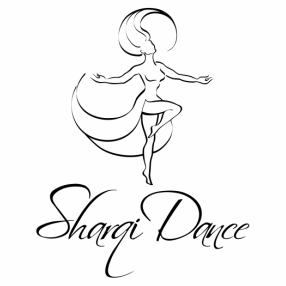
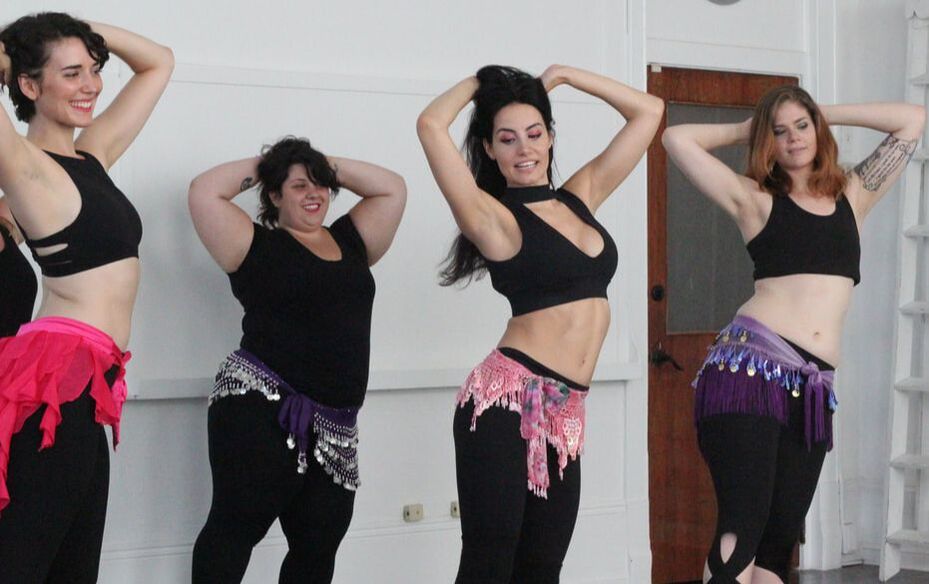
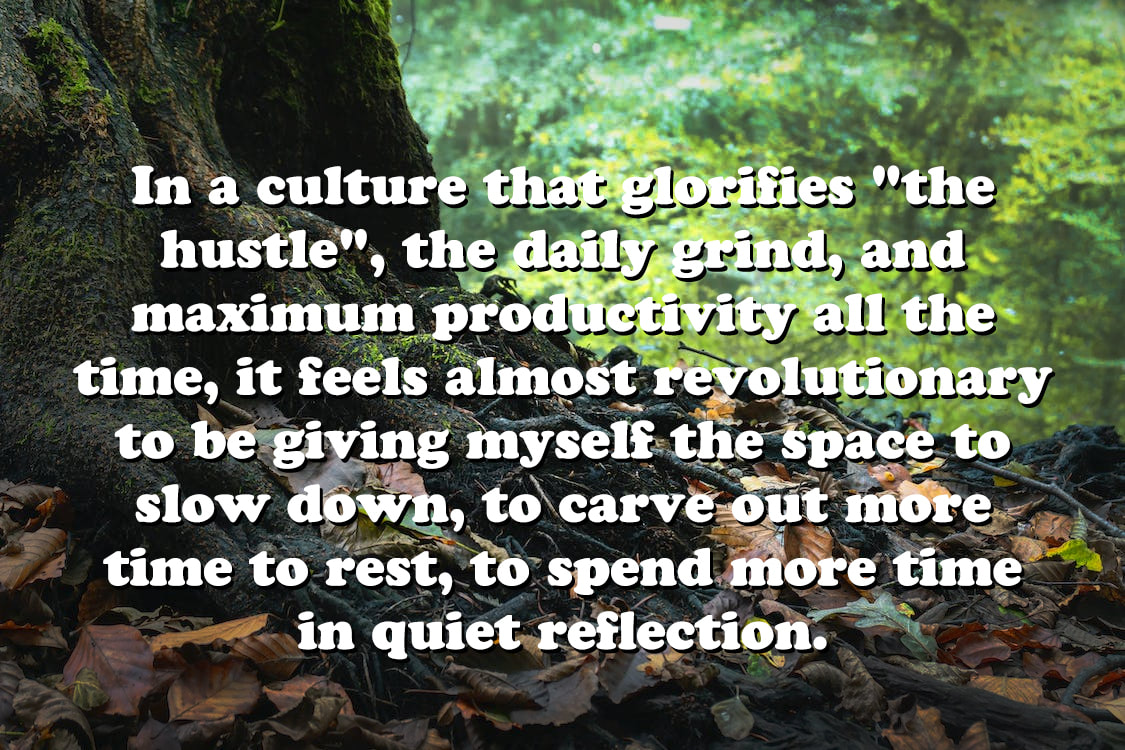
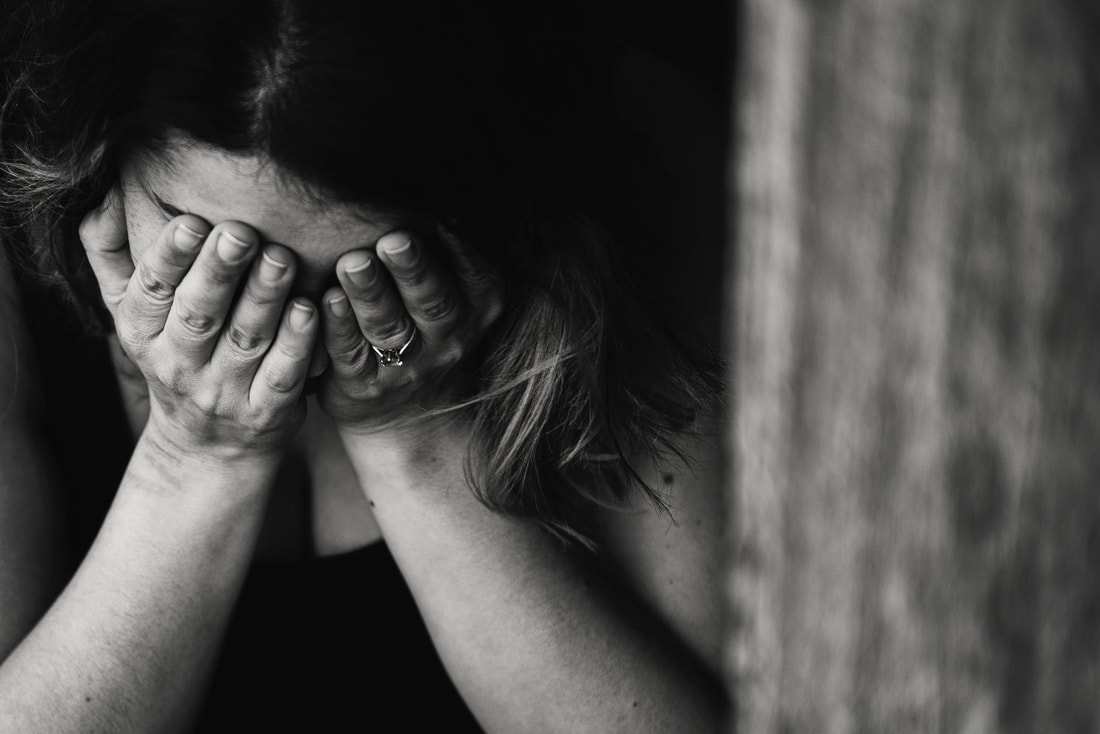
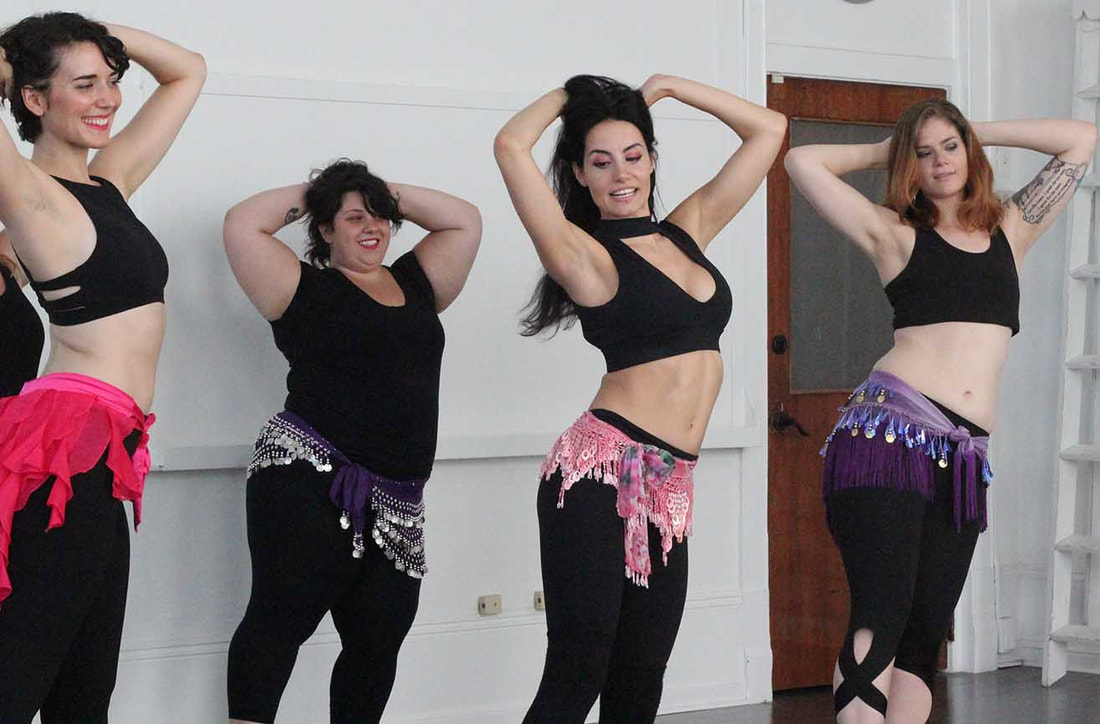
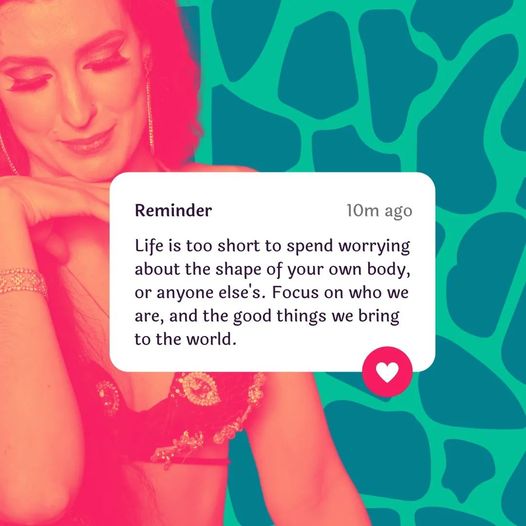
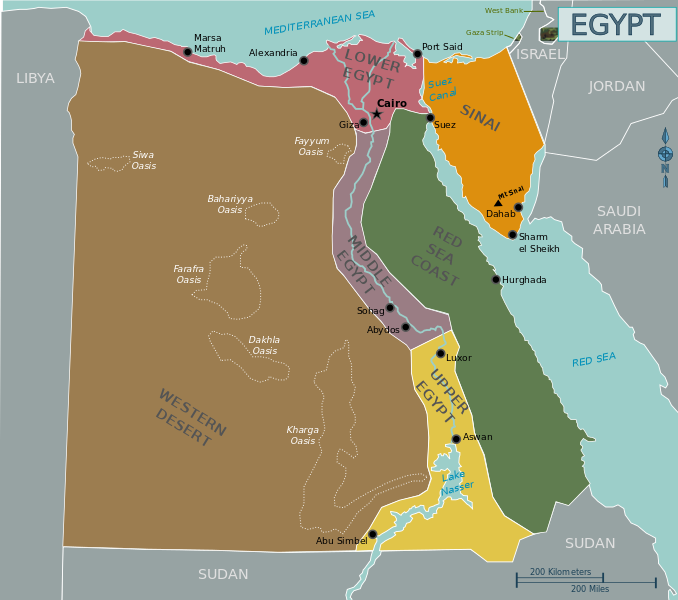
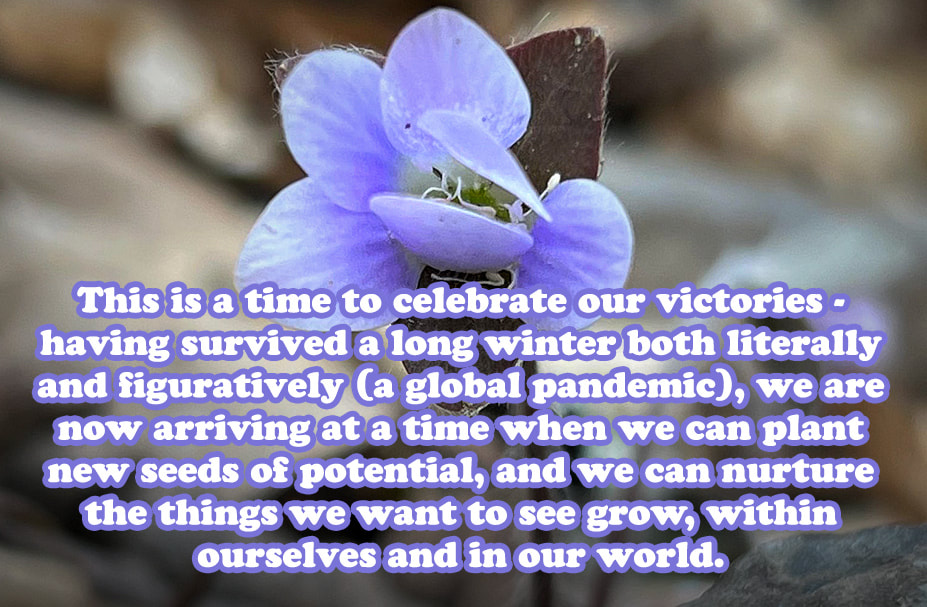
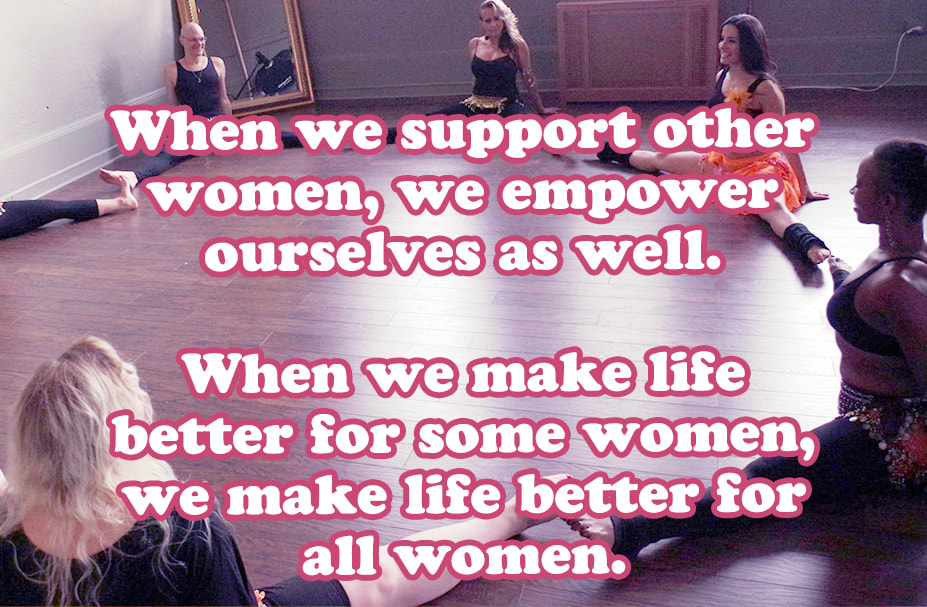
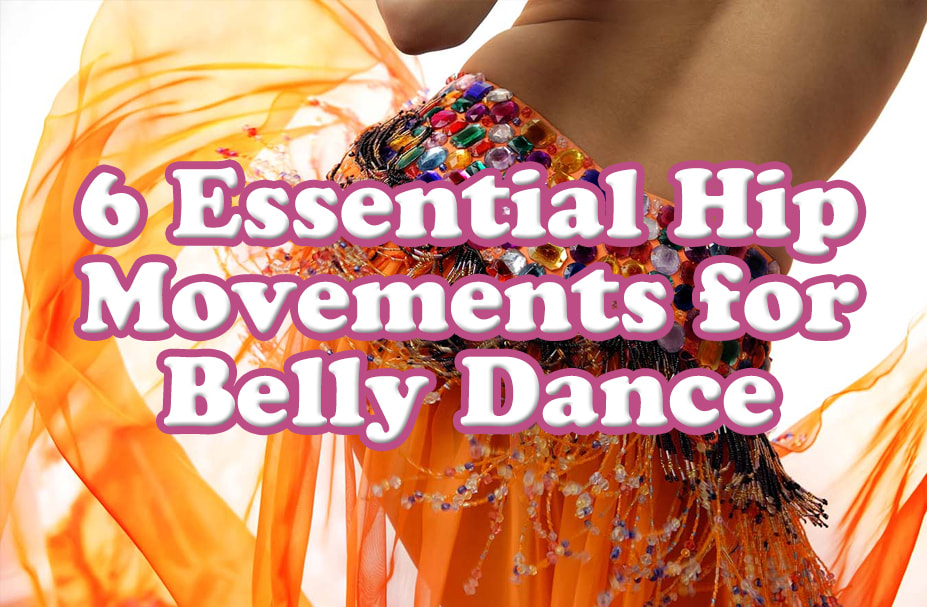
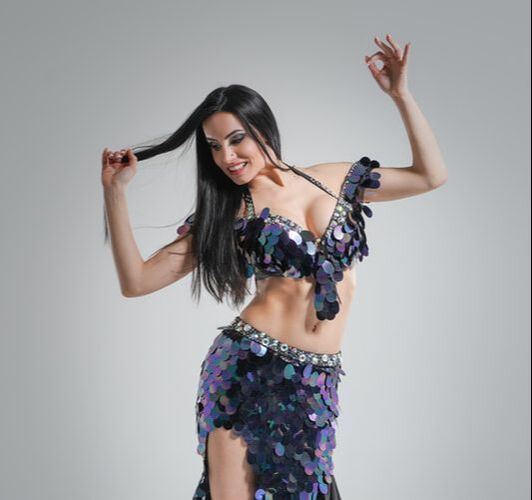
 RSS Feed
RSS Feed